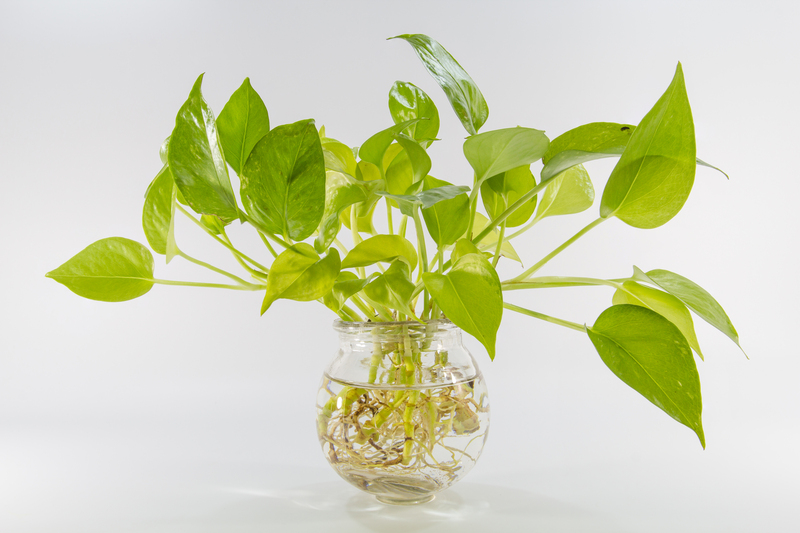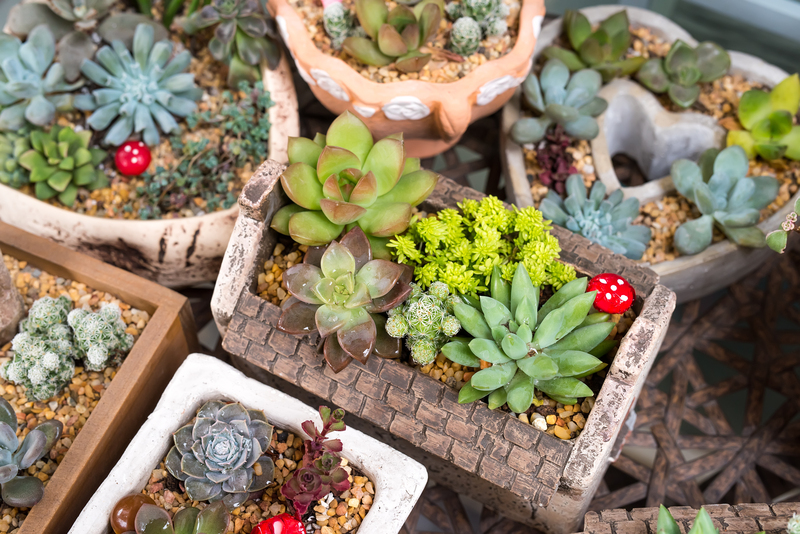Flora and Fauna: Gardening as a Climate Cure
Posted on 05/06/2025
Flora and Fauna: Gardening as a Climate Cure
Gardening is more than just an enjoyable pastime; it is an effective, grassroots solution to some of the world's most pressing environmental challenges. By nurturing flora and providing habitats for fauna, gardens play a vital role in climate regulation, biodiversity preservation, and ecological restoration. In this comprehensive guide, we'll explore how fostering green spaces can be a powerful climate cure, the science behind flora and fauna in gardens, and actionable strategies for gardeners of every level.

Why Gardening Matters in the Fight Against Climate Change
Climate change is an ever-present threat, marked by rising temperatures, erratic weather, and degraded habitats. Gardening as a climate cure is gaining global recognition for its multifaceted contributions:
- Carbon sequestration: Plants in gardens absorb CO2, mitigating greenhouse gas accumulation in the atmosphere.
- Biodiversity support: Home gardens create microhabitats for insects, birds, amphibians, and small mammals, sustaining local flora and fauna?
- Urban cooling: Green spaces reduce the "urban heat island" effect, lowering local temperatures and making cities more livable.
- Rainwater management: Gardens improve water infiltration and help filter pollutants, reducing stormwater runoff.
- Pollinator havens: Native plants and flowers feed bees, butterflies, and other pollinators critical for food security.
The Science Behind Flora and Fauna in Climate Resilience
Plants (flora) and wildlife (fauna) intertwined in garden ecosystems act as powerful climate mediators. Here's how:
- Photosynthesis: Flora use sunlight to convert CO2 into oxygen, a cornerstone process stabilizing Earth's climate.
- Soil health: Thriving plant roots enhance soil structure, boosting its carbon storage capacity and preventing erosion.
- Wildlife interactions: Fauna such as birds control pests, worms aerate the soil, and pollinators enable fruit and seed production.
Every garden--regardless of size--can foster a mini-ecosystem that amplifies these climate-positive processes. Gardening for climate cure thus operates on both a local and global scale.
Flora: The Green Engine of Carbon Sequestration
Choosing Climate-Resilient Plants
Not all plants are created equal in their ability to withstand changing weather patterns. Native flora are typically best suited for local soil and climate, requiring less water and fertilization:
- Deep-rooted trees and shrubs lock away carbon in their biomass and underground root systems.
- Perenials reduce the need for annual planting and soil disturbance, preserving soil carbon sinks.
- Groundcovers such as clover and creeping thyme prevent erosion and suppress weeds naturally.
Edible Gardens and Climate Solutions
Growing your own food substantially cuts "food miles," or the carbon emissions generated by transporting produce. Edible gardening using climate-adapted crops--like drought-tolerant beans or heirloom tomatoes--offers these advantages:
- Decreased reliance on industrial agriculture, which is a major greenhouse gas emitter.
- Enhanced food security through locally grown, resilient produce.
- Organic methods (like composting and mulching) reduce chemical input, helping restore soil health and biodiversity.
Gardening as a climate cure starts with choosing the right flora for your region and needs.
Fauna: Supporting Wildlife for a Healthy Ecosystem
Creating Habitats in Your Garden
Your backyard, balcony, or windowsill can offer a safe haven for animals affected by habitat loss. Here's how supporting fauna contributes to a healthier climate:
- Pollinators: Bees, butterflies, moths, and hummingbirds pollinate both wild flora and crops, supporting food webs and resilience.
- Beneficial predators: Ladybugs, frogs, and birds keep pest populations in check, reducing the need for pesticides.
- Decomposers: Earthworms, fungi, and microbes break down organic matter, enriching soil and enhancing its carbon storage.
Simple Steps for Creating Wildlife-Friendly Gardens
- Plant a diversity of native species to offer food and shelter throughout the year.
- Provide fresh water with birdbaths, shallow ponds or water dishes.
- Leave dead wood or leaf litter in a corner for insects, amphibians, and hedgehogs.
- Use organic practices; avoid chemical pesticides and herbicides harmful to fauna.
- Create vertical habitats with trellises, climbers, and hanging baskets.
Supporting fauna in gardening strengthens the overall habitat and ecosystem, boosting climate resilience for years to come.
How to Start Gardening for Climate Healing
Assessing Your Garden's Potential
Even a small space can contribute to climate action. Consider these factors:
- Sunlight and shade patterns across your plot or balcony
- Soil type and drainage
- Microclimates created by buildings, fences, or trees
- Available water sources and rainwater harvesting opportunities
Start small by planting climate-resistant species in containers, vertical gardens, or raised beds. Even city-dwellers can grow herbs, pollinator flowers, or even dwarf fruit trees in pots.
Best Practices for Climate-Friendly Gardening
- Compost kitchen waste to create nutrient-rich soil amendments and reduce landfill emissions.
- Mulch around plants to preserve soil moisture, minimize evaporation, and sequester carbon.
- Gather rainwater in barrels or tanks to irrigate gardens sustainably.
- Practice permaculture principles, such as companion planting and building layered systems, to mimic natural ecosystems.
Integrating Technology and Innovation
Digital tools and apps can help track plant growth, weather, and garden health, making climate-friendly gardening more accessible than ever before.
Case Studies: Gardening Initiatives Curing the Climate
Urban Community Gardens
In cities worldwide, community gardens have turned unused plots into green oases that absorb carbon, cool urban areas, and feed residents. For example, New York City's GreenThumb has over 600 gardens managed by volunteers, which collectively store tons of carbon and provide habitats for urban wildlife.
School Wildlife Gardens
Schools are creating learning landscapes that double as habitats for pollinators and small animals, teaching students about climate action and biodiversity from a young age. These projects inspire future generations and serve as blueprints for expanding green spaces globally.
Edible Forest Gardens
Permaculture-based forest gardens mimic natural woodlands with layering and diversity. These self-sustaining plots capture large amounts of carbon, resist drought, and offer year-round harvests with minimal input. They exemplify gardening as a climate cure on a larger scale.
Overcoming Challenges in Climate-Positive Gardening
Adapting to Drought and Extreme Weather
- Use drought-tolerant native plants that thrive in tough conditions.
- Install drip irrigation or soaker hoses to minimize water waste.
- Cultivate groundcovers to reduce surface evaporation and keep roots cool.
Mitigating Pests Naturally
- Encourage predatory fauna like ladybugs and birds to keep pests at bay.
- Plant strong-smelling herbs (such as basil, mint, or lavender) to deter insects.
- Use crop rotation and plant diversity to prevent disease buildup.
With a little creative thinking and sustainable methods, gardening for the climate cure overcomes common obstacles and adapts to a changing environment.

Gardening as a Climate Cure: The Path Forward
Collective Impact and Policy Support
While individual gardens matter, the true magic happens when whole communities, cities, and nations commit to integrating flora and fauna into their landscapes. Efforts like urban forestry, green rooftops, and wildlife corridors take gardening to the next level, scaling up climate healing efforts.
- Government incentives for tree planting and green infrastructure
- Public gardens and parks designed for biodiversity and carbon capture
- Education programs that empower citizens to start their own gardens
Unlocking the full climate cure potential of gardens requires embracing these strategies at every level of society.
Conclusion: A Greener Future Begins in Your Garden
Flora and fauna gardening is a powerful, hands-on step toward a healthier, more sustainable planet. Whether your plot is a sprawling backyard, a rooftop terrace, or a window box, cultivating plants and welcoming wildlife can:
- Reduce your carbon footprint
- Preserve and expand habitats for animals
- Enhance local air and water quality
- Provide nutritious, homegrown food
- Build climate resilience, one garden at a time
Start gardening for the climate cure today. With every seed you plant and every pollinator you attract, you become part of a global, green movement to heal the Earth--one garden at a time.

